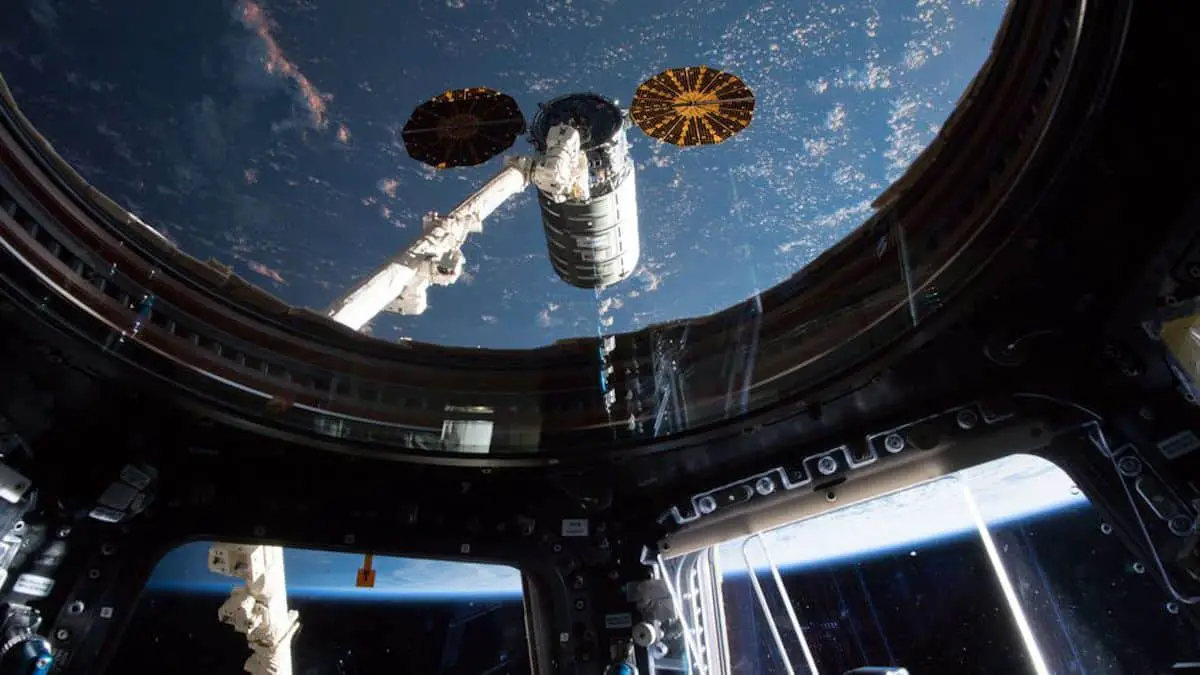In a world-first, an international team of researchers succeeded in producing a quantum gas made up of two types of atoms on board the International Space Station (ISS). This achievement, which opens the way for the application of quantum technologies in space, is the result of experiments conducted remotely from Earth.
A new step in quantitative research
Aboard NASA’s Cold Atom Laboratory, researchers produced Bose-Einstein condensates, a quantum state of matter obtained by cooling atomic gas to temperatures near absolute zero.
According to Nicholas Bigelow, professor of physics and optics at the universityUniversity of RochesterThese quantum tools could be used to improve the study of quantum matter, facilitate interplanetary travel, help solve the mysteries of the universe, and deepen our understanding of the fundamental laws of nature.
Professor Bigelow, who is also the director of the Space Ultracold Atoms-funded consortium NASAHe emphasizes that the absence of gravity allows for increased measurement accuracy and the detection of subtle effects that gravity can mask.
Towards a better understanding of dark energy
Thanks to this new capability, the Cold Atom Laboratory can now study not only the quantum properties of individual atoms, but also quantum chemistry, which focuses on the interaction and combination of different types of atoms in a quantum state. Thus, researchers will be able to conduct a wider range of experiments and deepen their knowledge of the nuances of their implementation in microgravity.
One of the mysteries that scientists hope to solve concerns the principle of equivalence, which states that gravity affects all objects in the same way, regardless of their mass. This principle is part of the general theory of relativityAlbert EinsteinIt doesn’t exactly fit the laws of quantum physics, which describe the behavior of small objects like atoms.
Scientists have already tried Atomic interferometers On Earth to check whether the principle of equivalence is valid at the atomic level, but they will be able to test it more precisely in space thanks to the Cold Atom Laboratory.
Synthetic
This achievement represents an important milestone in the application of quantum technologies in space. Researchers plan to use a diatomic-gas interferometer to measure gravity with high precision to learn more about the nature of dark energy, the mysterious engine of the universe’s accelerating expansion.
The knowledge gained could lead to the development of precise sensors for a wide range of applications, including deep space navigation and improving space clocks, which are essential to many aspects of modern life such as the Internet, broadband and GPS.
For better understanding
What is a Bose-Einstein condensate?
A Bose-Einstein condensate is a quantum state of matter obtained by cooling an atomic gas to temperatures close to absolute zero.
What is the role of gravity in quantum experiments?
Gravity can limit the accuracy of measurements in fundamental physics. Its absence makes it possible to obtain increased measurement accuracy and detect subtle effects that can be masked by gravity.
What is the principle of equivalence?
The equivalence principle, part of Albert Einstein’s theory of general relativity, states that gravity affects all objects in the same way, regardless of their mass.
What is dark energy?
Dark energy is the mysterious driving force behind the accelerating expansion of the universe. Its exact nature is still unknown.
What are the potential benefits of quantum technologies in space?
Quantum technologies in space could lead to the development of precise sensors for a wide range of applications, including deep space navigation and improving space clocks.
Key lessons
| Teachings |
|---|
| 1. Production of a quantum gas composed of two types of atoms on board the International Space Station. |
| 2. Using quantum tools to improve the study of quantum matter and facilitate interplanetary travel. |
| 3. The absence of gravity allows for increased measurement accuracy in fundamental physics. |
| 4. An opportunity to study quantum chemistry, which focuses on the interaction and merging of different types of atoms in the quantum state. |
| 5. Scientists can test the equivalence principle more precisely in space using a cold atom laboratory. |
| 6. Researchers plan to use a diatomic gas interferometer and quantum gases to measure gravity with high precision. |
| 7- The knowledge gained can lead to the development of precise sensors for a wide range of applications. |
| 8. Quantum technologies in space could improve space clocks, which are essential to many aspects of modern life. |
| 9. Researchers hope to learn more about the nature of dark energy, the mysterious engine behind the accelerating expansion of the universe. |
| 10. Experiments are conducted remotely from Earth. |
References
Key Caption: The Cold Atom Laboratory on the International Space Station produces clouds of “ultracold” atoms, the coldest temperature matter can reach. Through experiments conducted in the laboratory and remotely controlled on Earth, a team of international researchers was able to produce Bose-Einstein condensates, a quantum state of matter consisting of an atomic gas cooled to temperatures close to absolute zero. (JPL/NASA photo)
The original article was published in Nature magazine. “Quantum Gas Mixtures and Two-Type Atomic Interferometry in Space” – DOI: 10.1038/s41586-023-06645-s
[ Rédaction ]

“Hardcore beer fanatic. Falls down a lot. Professional coffee fan. Music ninja.”







More Stories
Google has registered a trademark on the name of the AI-generating camera in its next smartphone
Opening concert of the Lanaudiere Festival: Farah Alipay will take us on a journey into space
Hybrid brains were created from rat and mouse cells